For somebody who’s spent decades creating this fenced, predator-free sanctuary for native animals, releasing cats into it seems like a very odd thing to be doing. But here at Arid Recovery’s wildlife reserve in outback South Australia, senior scientist and ecologist Dr Katherine Moseby believes it could be key to helping threatened marsupials, such as the greater bilby and burrowing bettong, evolve behaviours and physical traits to help them outwit or evade their feline nemeses.
“It’s certainly a risky endeavour, and we make sure we have really healthy populations of the species in other parts of the reserve in case things do go wrong,” says Katherine, an associate professor at the University of New South Wales in Sydney. “But if we don’t take risks and try new things, threatened species are going to end up only found in zoos or behind fences.”
Arid Recovery’s reserve spans 12,300ha of red dirt near Roxby Downs, 580km north of Adelaide. Katherine and her colleagues have been trialling their unorthodox approach here for six years and indications are it may be working. She and husband Dr John Read, an ecologist, have a reputation for generating innovative solutions for addressing Australia’s catastrophic feral cat problem.
The seemingly counterintuitive cat-release strategy was developed after the pair grew increasingly frustrated that attempts to release captive-bred bilbies, bettongs, quolls, stick-nest rats and bandicoots frequently failed because cats and foxes picked them off, leaving little bloodied radio collars and tufts of fur.
“For years we tried to establish bilby populations outside the Arid Recovery reserve,” John explains. “The animals thrived inside, but when we tried to get them outside the fences, no matter how much baiting, shooting and trapping we did, we couldn’t get cat numbers low enough.”
Australian native animals haven’t evolved alongside predators such as cats and “simply don’t have the anti-predator behaviours or physical traits needed to avoid them”, Katherine says.
Currently, successful releases are often limited to fenced sanctuaries or offshore islands expunged of cats – but this is something the husband-and-wife, cat-battling duo are hoping to change.
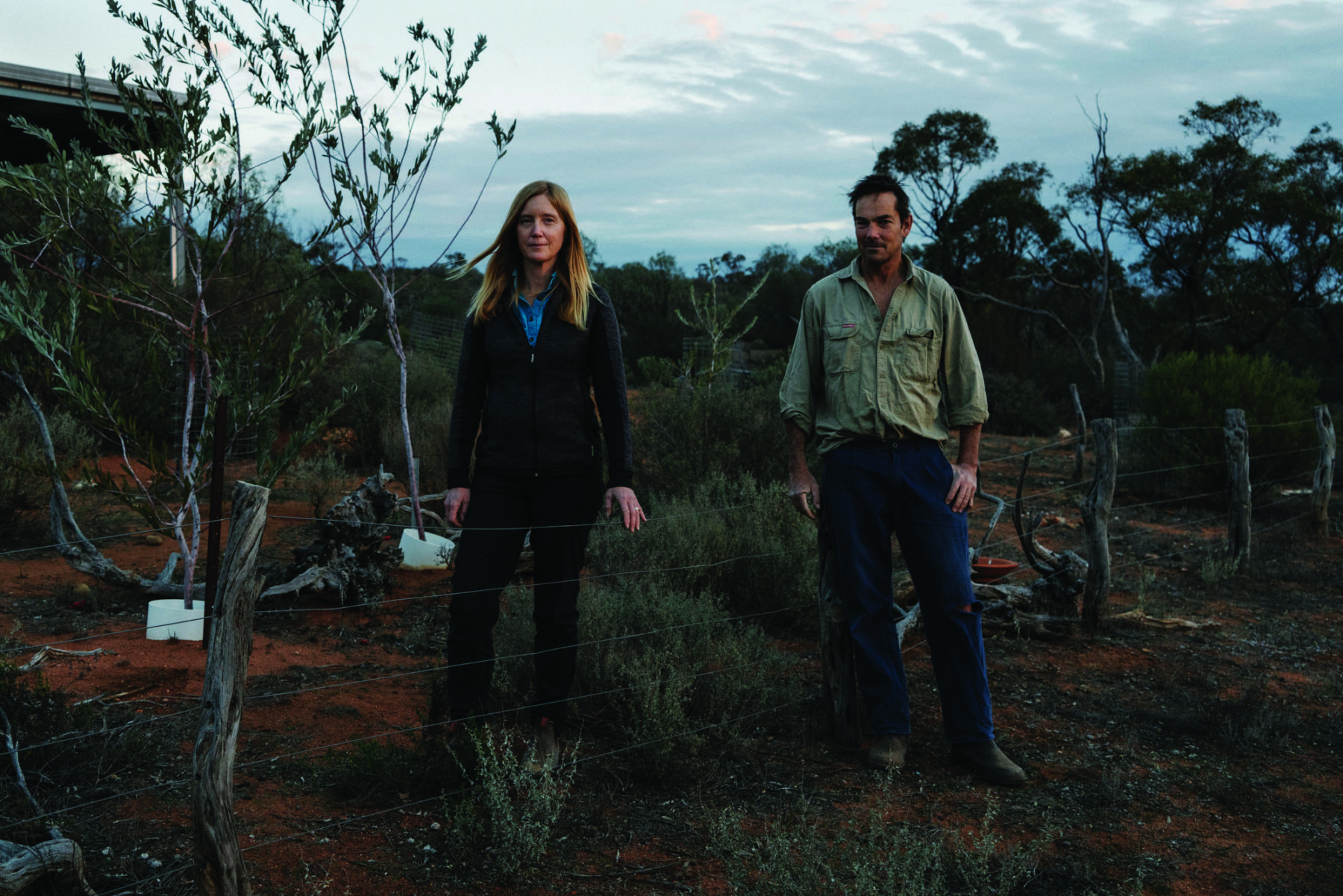
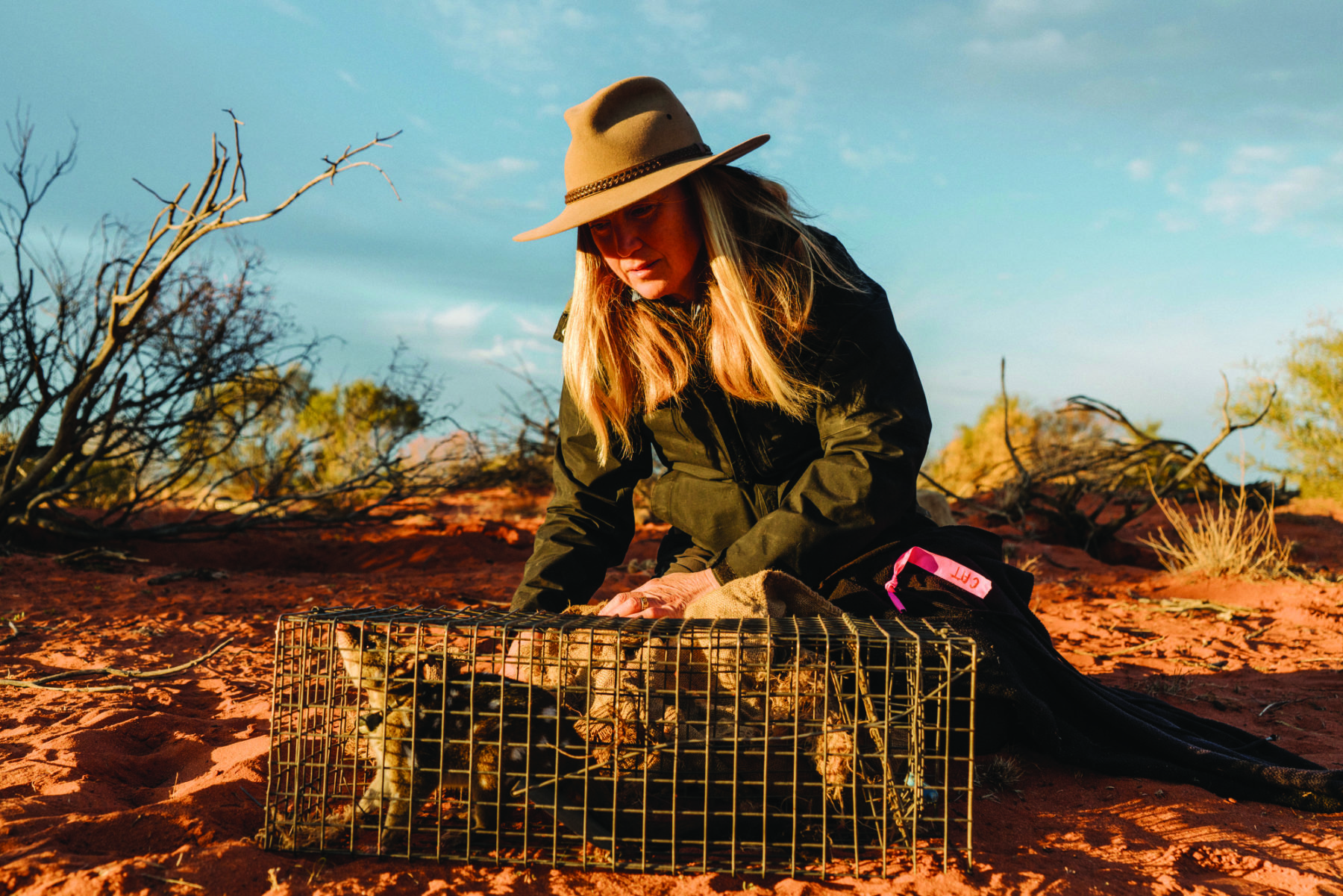
Australian wildlife ideal size for cat snack
Cats have had a devastating impact on our native wildlife. The federal government’s Threatened Species Strategy reports that “the scientific evidence is unequivocal that feral cats are one of the greatest threats to Australia’s land-based mammals”.
Since European colonisation, Australia has lost 33 mammal species, including the long-tailed hopping-mouse, crescent nailtail wallaby and desert bandicoot. The nation’s rate of mammal species loss is unprecedented globally and cats are implicated in most of the extinctions. Today, cats continue to threaten a further 120 mammal species.
Genetic studies of feral cats suggest the origins of most can be traced to animals that arrived with early colonists, beginning with the First Fleet in 1788. From Sydney and other settlements they spread out, reaching most of the continent by the 1890s.
“There were few barriers to cat success,” says Charles Darwin University conservation biologist Professor John Woinarski. “Cats are remarkably flexible and efficient hunters, and can inhabit ecosystems from alpine regions to the harshest deserts.”
They aren’t alone. Red foxes were deliberately released in south-eastern Australia, from where they dispersed in the 1870s. In tandem with cats, foxes ate their way through native species, which were also out-competed for food resources by booming populations of introduced rabbits (see page 26). Today, feral cats are found across at leas 99.8 per cent of the mainland. They currently number about 2 million, although the population fluctuates between 1.4 million and 5.6 million depending on whether times in the bush are lean, or if plentiful rains have led to an abundance of prey.
Most of Australia’s recently extinct and currently threatened mammals fall into the same weight range of 35g to 5.5kg – the ideal snack size for foxes and cats. Studies of the contents of thousands of cats’ stomachs conducted by scientists, including John Woinarski and Professor Sarah Legge at the Australian National University in Canberra, indicate that feral cats today kill more than 2 billion native animals every year.
Conservationists have waged what’s seemed like an almost unwinnable war, shielding susceptible species in fenced reserves and on islands, and shooting, trapping and baiting cats continent-wide. But a series of recent innovations may mean that the tide is finally turning on feral cats. “There’s no reason why we should lose any more species to cat predation,” Sarah says.
A different approach
Following the many failed releases of greater bilbies and burrowing bettongs, Katherine and her co-workers decided on a radically different approach. In 2015, under tight control and with careful monitoring, they gradually released a handful of cats into a 2600ha paddock with 50 bilbies and 350 bettongs.
It was hoped it might accelerate natural selection and stimulate learning, but nobody really knew what would happen.
“We started off with just one cat, then added a few more,” Katherine says. “It’s a moving beast in that we add cats, we take cats out, we monitor the population.” Some of the bilbies and bettongs inevitably fell prey to the cats. But something else happened too, as the scientists reported in the Journal of Applied Ecology in 2019. When they later put cat-exposed and cat-naive bilbies in another enclosure with the feral predators, those with a history of exposure were much more likely to survive.
“We’re finding population-level changes over time,” Katherine says. “Behaviourally, they’re getting harder to approach. They’re getting more vigilant, spending more time under vegetation cover and have faster escape behaviour. We’re also seeing the hind feet of burrowing bettongs getting bigger, as well as their overall size.”
The experiments have expanded into a second paddock at Arid Recovery and are also being trialled at the Wild Deserts project in a 10,000ha fenced area of Sturt National Park in the far north-western corner of New South Wales. The results so far demonstrate proof of concept, but it may be years before the researchers can tell if they represent genetic changes that will be passed down through generations.
“Exposing native species to a controlled amount of predation and trying to drive selection towards predator recognition and avoidance behaviour is a new option worth exploring,” comments Sarah. “Early results are promising, and indicate changes in behaviour and morphology that go in the right direction. But whether you could push that enough so these animals can persist with cats, we’re not sure.”
Answering that “could take a long time, likely far more than a couple of years,” Katherine says. “But eventually…we hope to make these populations better able to coexist with cats.”
The Kiwirrkurra IPA rangers
About 1000km or so to the north-west, in the Kiwirrkurra Indigenous Protected Area (IPA) that abuts the Western Australian–Northern Territory border, Aboriginal people are leading the charge against cats. In this IPA – which is bigger than Denmark or Taiwan, taking in 43,000sq.km of dune country in the Gibson and Great Sandy deserts – cats have been hunted for more than a century.
Research shows the tradition is helping save species such as greater bilbies and great desert skinks. According to Dr Rachel Paltridge, an ecologist working with the IPA who has studied the benefits of cat hunting, people at Kiwirrkurra “are motivated by the opportunity to obtain a favourite meat, but are also very interested in the wildlife they’re protecting”.
Traditional cat hunting was once more common across Central Australia, but today it’s only regularly practised at Kiwirrkurra and Nyirripi, in the southern Tanami Desert north-west of Alice Springs. In summer, when cats tire more easily, a group of mostly female Pintupi trackers heads out weekly to search for fresh tracks in the sand of the spinifex grasslands. When they find a cat, they set off after it, catch it and quickly dispatch it.
“The ladies are pretty fit, they’ve got a lot of stamina, and they’re very motivated to catch the cat, so they just run them down on foot,” Rachel says.
They record, weigh and measure the cat’s stomach contents, then cook the cat on a fire. “The hair is singed off and then it’s baked in the coals,” she explains. “It’s a tender, pale-coloured meat with a mild taste.”
In an interview translated from Pintupi-Luritja, Kiwirrkurra ranger John Tjupurrula West told the scientists: “These days there are a lot of cats. They are killing all the desert finches and other things too, like bilbies. That’s why we are hunting and killing the pussycats.” Rachel and John were among the authors of a 2020 paper in the CSIRO publication Wildlife Research, “Is cat hunting by Indigenous tracking experts an effective way to reduce cat impacts on threatened species?”, that showed that from 2014 to 2019 this highly targeted control method caught 130 cats and is helping endangered species survive. The researchers found that within a 20km radius around the Kiwirrkurra community, where most hunting occurs, bilbies and skinks were persisting at higher numbers, and cat numbers were 30 per cent lower, than in the rest of the IPA.
The method is very efficient because “it takes a short time, people can get multiple cats in one day and they can target specific cats that are hunting threatened species”, Rachel says. There is potential for it to be adopted more widely, “but you’d have to be pretty motivated to actually get out there on a hot day and chase the cats down”. Nevertheless, other ranger groups have come to Kiwirrkurra to learn about tracking and hunting cats.
Traditional cat hunting is not an effective method across the board for removing cats, but it’s another tool that can be used both at Kiwirrkurra country and beyond.
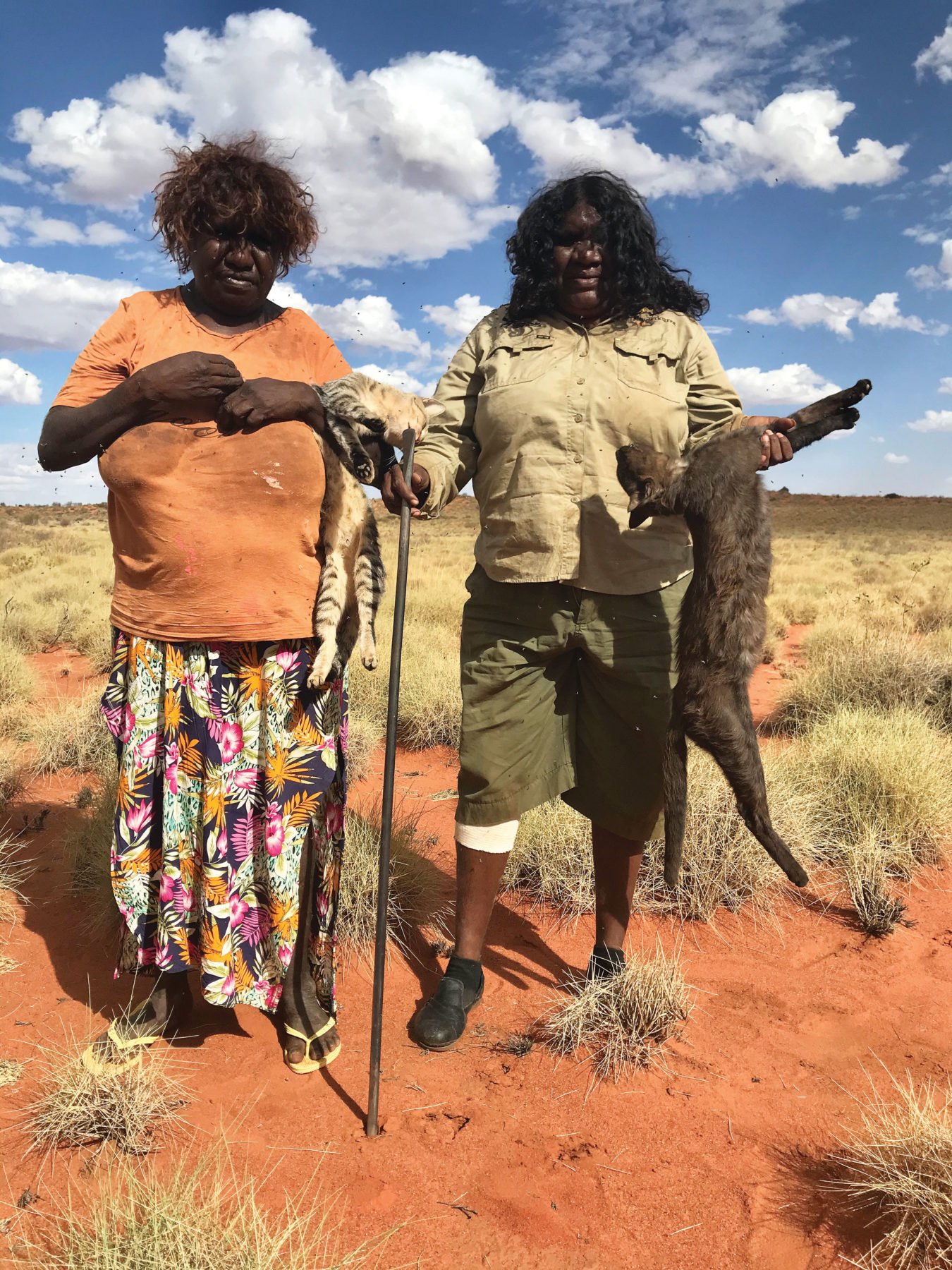
Traditional baiting and trapping don’t work
Katherine and John are certainly ecologists with a history of thinking outside the box when it comes to feral cats – and they need to be.
Neither shooting, baiting nor trapping are entirely effective because cats are wily creatures adept at hiding, rarely approach traps and prefer catching live prey to scavenging baits.
Baits such as Eradicat have had more success in recent years. These are sausages of kangaroo, chicken fat and the poison 1080, which is identical to a toxin in almost 100 species of native plant in the genus Gastrolobium; this renders it poisonous to introduced species such as cats and foxes, but far less harmful to native species that have evolved alongside the plants (see Poison with purpose, AG 164).
“But traditional baiting and trapping don’t work well when there’s plenty of food,” John says. “Baits are quite effective when cats are really starving, and are useful for eradications on islands or in fenced reserves, but if you knock off 80 per cent of the cats, prey increase in number and cats are less likely to take the baits, so your control becomes less and less effective.”
Some years ago, John began to wonder if there was a way to target cats that capitalised on their natural behaviours. What he came up with is the Felixer, a trap now being trialled across Australia. AG first encountered one in 2016 on Bush Heritage’s Pullen Pullen reserve in Queensland, where John has helped the organisation protect the endangered night parrot (see Secret sanctuary, AG 134).
This grooming trap, the size of a packing crate, is placed along paths that cats follow through the bush. Equipped with a computer processor and cameras, it uses laser sensors to recognise a cat’s gait and shape when it walks past and squirts it with 1080 poison gel. Cats have an irrepressible urge to groom, so they then lick the gel off their fur, which swiftly kills them.
“The advantage of the Felixer is it doesn’t rely on the cat scavenging or going into a cage trap. It uses its natural behaviour to groom itself,” adds John, who is both a researcher affiliated with the University of Adelaide and also the CEO of Thylation, the company that produces the Felixer. The traps collect photos and sensor data on everything that crosses their path, so they can be constantly refined. “We know exactly what our success rate is, and what does and doesn’t work in different environments,” John says.
As was detailed in the 2020 article in Wildlife Research, tests of 20 Felixers led by Katherine at Arid Recovery were highly specific in targeting cats. During a six-week period, on 1024 occasions that bettongs, bilbies, birds, lizards, people and vehicles passed in front of them, the sensors did not fire – but they did so on 33 feral cats that crossed their paths. As many as 160 Felixers are now deployed across reserves and ecologically important sites across Australia and have so far successfully targeted more than 500 feral cats.
“The beauty of a grooming trap is that you can leave it out at a site for months on end,” adds Rachel, who says that in the Yanyuwa IPA in the Gulf of Carpentaria, where she works with the li-Anthawirriyarra Sea Rangers, Felixers are left untended for up to five months at a time. “They’re solar powered and reload the poison cartridges as soon as they fire, so they are a good long-term solution.”
Another unusual idea that John, Katherine and their colleague Dr David Peacock at the University of Adelaide came up with to limit the impact of cats on released populations of animals has been dubbed ‘toxic trojans’.
It involves putting “a toxic implant under the skin of the animal such as a greater stick-nest rat, bilby, quoll or possum”, John explains. “It has a special polymer coating that is stable and can remain on the animal for its life – it just sits there. But if a cat or a fox eats it, it will dissolve in its stomach acid and release the poison.”
Initial trials with 1080 have been promising, and although the implants won’t save the animal that has been eaten, they have the potential to prevent “its mates getting eaten as well”, John says. He agrees the Felixer and toxic trojans are unconventional ideas, but says they are both derived from knowledge of ecology and cat behaviour. “They might sound really wacky, but they actually make perfect sense. We’re confident they’ll improve the conservation status of our most threatened animals.”
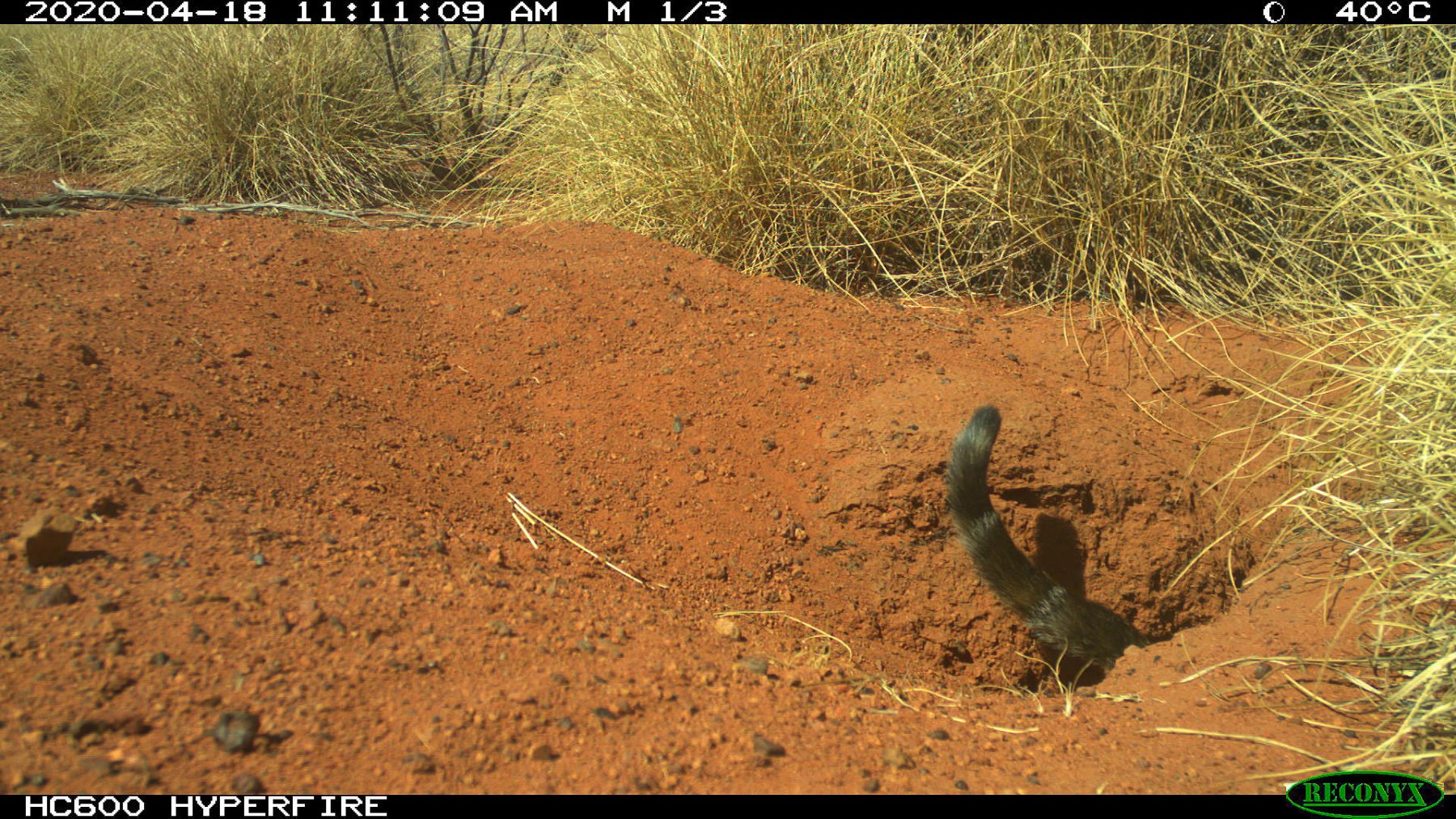
Island cat control
Although many people may have given up on the broadscale removal of cats from the mainland, the approach is still being enthusiastically pursued on islands. “We now have a mixture of control mechanisms that have made it possible to eradicate cats from increasingly large islands,” John Woinarski says.
Thirty-five have been declared cat-free, including WA’s 62,000ha Dirk Hartog Island, the largest in the world to have eradicated cats. Now 11 native species are being reintroduced. “But the new challenge is to do cat eradication on inhabited islands,” Sarah says. “That’s a pretty big step.” At least another five islands – including Bruny, Christmas and French (see page 48) – are all hoping to go cat-free by 2030. Perhaps the most ambitious is SA’s 440,500ha Kangaroo Island (KI).
Removing cats on KI became even more pressing following the 2019–20 bushfire crisis, which devastated the prospects of threatened species such as the mouse-sized, carnivorous KI dunnart. Feral cats seek out fire scars because the removal of vegetation makes it easier for them to hunt. This acts like a “double whammy”, scientists say, compounding damage from the fire itself.
But the KI fires presented an opportunity as well, says James Smith, feral cat eradication project manager with the Kangaroo Island Landscape Board: “The fierce bushfires that happened on the western side of the island and came across a significant portion of the island arguably took out a large proportion of the feral cats,” he says.
Since then many organisations have been working to control cats in important habitats, so far removing more than 850 of them. “Now that there is all this expertise and momentum, we want to cost and hopefully fund getting cats off the whole island,” James says. Plans were already underway to remove cats from the 30,000ha Dudley Peninsula by 2025, but this effort will now be expanded to the whole island.
One thing in favour of conservationists on the island is that, for reasons that are not well understood, cats are much easier to trap in cage traps than they are on the mainland, meaning that on KI these are the “primary tool”, James says. Felixer grooming traps are also being used in some spots, particularly around fenced reserves protecting the dunnart.
Scientists applaud the efforts on Australia’s islands, but say this is a temporary solution. “There are many cases of native mammal species that essentially survive now, largely or only because they occur in areas from which cats have been excluded. It works well,” John Woinarski says. “But essentially it’s a bridging strategy until there’s a better way of controlling cats across broad landscapes.”
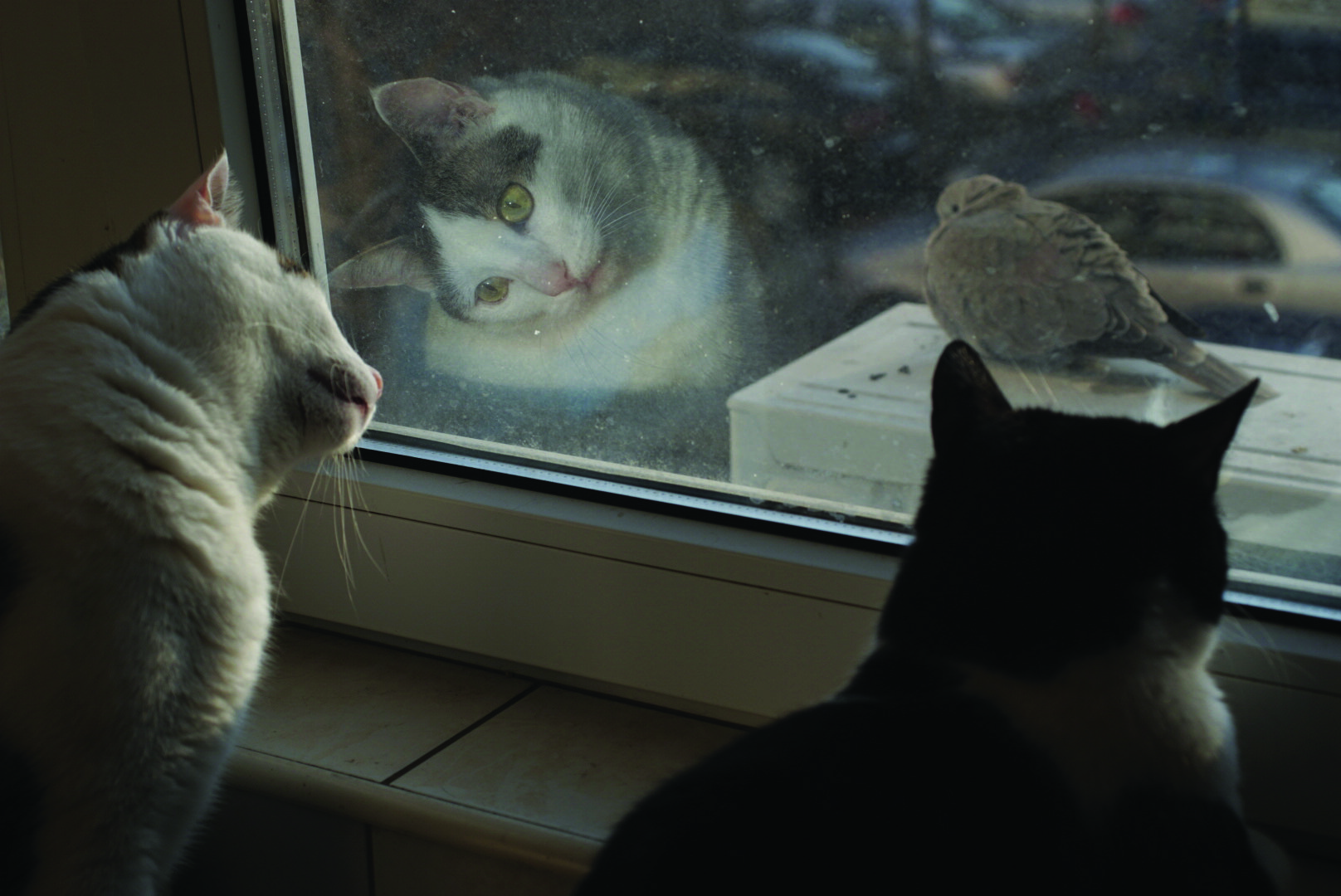
Genetic technologies?
Among those who aren’t yet ready to abandon removing feral cats on the mainland are those who believe exciting – yet controversial – new genetic technologies may hold the key.
“In the long run, the only plausible solution to eradicating cats from broad scale areas such as the mainland of Australia is in genetic engineering,” John Woinarski says. The idea is that genetically modified cats, which might be only capable of producing male offspring, for example, would be released into the wild. So-called gene drive technologies would cause the trait to be passed on to all offspring of modified cats, eventually causing it to spread across the entire feral cat population.
“Once you create this modified cat genome, you could rapidly shift the sex ratio of cat populations over a number of generations, and ultimately that would lead to a collapse of cat populations in the wild,” says Australian Wildlife Conservancy (AWC) spokesperson Joey Clarke. Gene drives have been demonstrated in the lab with fruit flies and mosquitoes. Similarly, CSIRO scientists have been involved in developing “daughterless carp” – modified versions of invasive European carp that can only produce male offspring – but they have not yet been released into the wild.
The AWC has partnered with CSIRO to explore the development of gene drives to control feral cats. Initial priorities include exploring knowledge gaps and ethical issues, as well as the sequencing and mapping of the sex chromosomes of feral cats. Understandably, the use of such ethically challenging technology is getting a mixed reception. “I’m certainly open to cautiously trialling new things,” Katherine says. “Genetic manipulations of both predator and prey species are going to be very powerful tools in the future. But we need to make sure we don’t open a Pandora’s box of other issues.”
“I feel very conflicted,” Sarah adds, “because it’s just a continuation of what we keep doing, which is moving shit around the place and creating dramas. Now, instead of moving an organism, we will move a synthetic gene, and I don’t really trust people to do the right thing with that kind of technology. But at the same time, gene drives could help us eradicate cats.”
The AWC admits gene drives would require many years of research, but argues that they “may represent our best chance at dealing with the scourge of feral cats”.
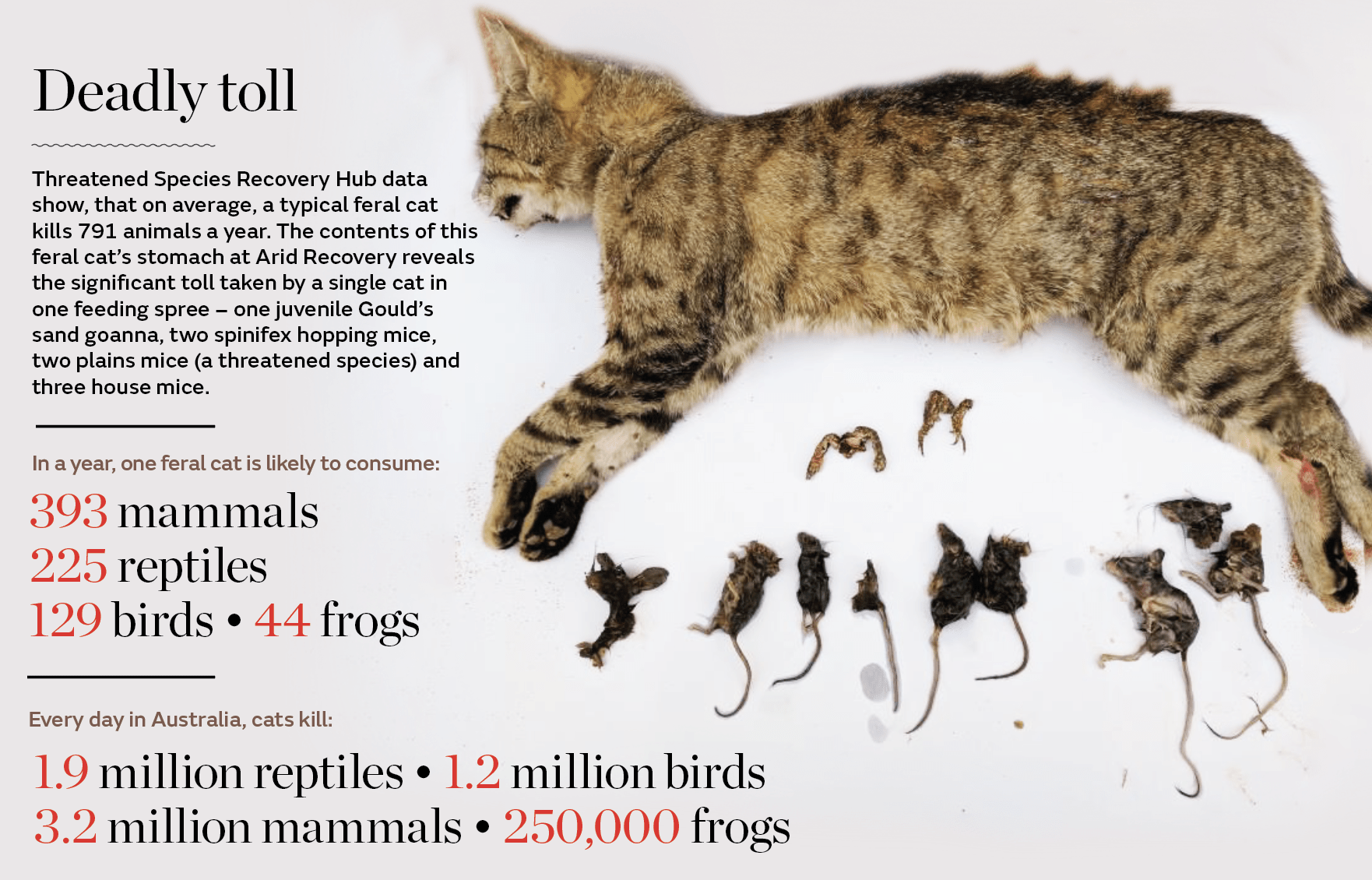
Will the problem of feral cats ever be solved?
Cat control has definitely saved at least a dozen native mammals from extinction, including the greater stick-nest rat, burrowing bettong and western barred bandicoot.
“Some really important victories recently have demonstrated that we’re becoming much more capable of dealing with cats,” John Woinarski says. “There’s no single current foolproof solution, but that doesn’t mean we can’t keep making incremental improvements in our effectiveness.”
Sarah argues that, in the absence of gene drives, an achievable scenario is that we remove cats on every island apart from Tasmania, we prevent any future cat-related extinctions, and we help many native species recolonise parts of their historic ranges.
“We’re making progress,” Katherine agrees. “We have to keep looking at multiple options because, at the end of the day, we want these animals outside fences and in the wider landscape.”
